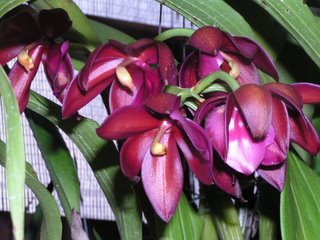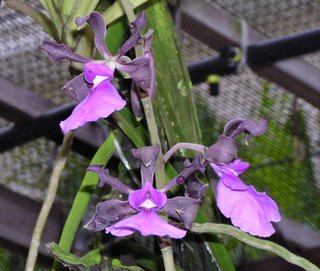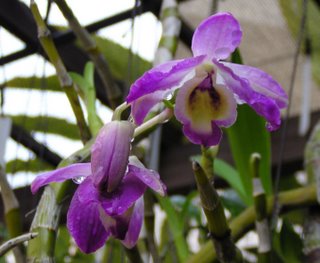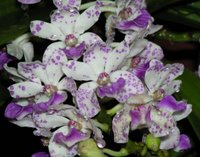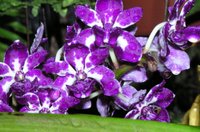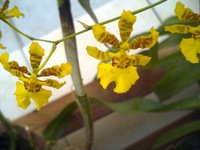Dendrobium Dawn Maree
The Dawn Maree flowers has been around since 26-May though a couple of the bunch has faded. Good news is that I have seen more buds on 2 more canes.
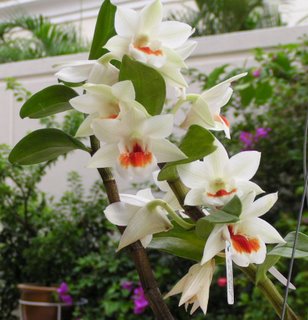
According to the RHS database, this hybrid is registered in 1983 by Burrows and it’s parents are Den. formosum & Den. cruentum. Both parents belong to the Formosae section of the Dendrobium family. There are some 30 species in this section distributed from India through SEA to Sumatra, Philippines and Borneo. This family is characterized by small little hairs a found on sheaths on the canes. Flowers of this section are predominating white and are long lasting.
Depending on the species, orchid flowers will last from 1 day to several months. However, all flowers will wilt if the pollens were dislodged either by rough handling or by an insect. Flowers are the reproductive organs of the plant and their main function is not for humans to admire but to attract pollinators that will help to transmit the genes of the flowers they visit. Hopefully, there are genes exchanges with different plants so as to increase the gene pool and have better chance to exchange and replace defective genes and produce new plants that have more vitality. So whenever the pollens are dislodged, the flower sensed that it has done its job in giving out its genes and the plant shuts it down perhaps to conserve energy so as not to spend energy maintaining a spent flower. In fact the urge to propagate is so strong that the plant will “force” flower if it becomes stressed or it sensed that it’s survival is threatened in the hope to have it’s genes transmitted.
The Renanthera flowers bloomed but they were quite badly affected by thrips. I always had been struggling with thrips which ravage most of the flowers causing the buds to drop prematurely. Been trying to reduce the use of chemicals…..
Other “new” blooms are:
• Mokara Saraya Red (says label at Orchidville when I bought them but couldn’t find it’s listing in RHS database)
• Cycmode Wine Delight
• Den. Hybrid (minature type)
• Onc. Golden Anniversary
New spikes seen:
• Den. secundum alba.
• Rhyncovanda Colmarie (same plant listed before but additional spike :))
• Another Mokara Saraya Red
BTW, it’s NOG guided tour times again this coming Saturday 19-Aug. Do come by. Volunteer guides will be there at 4 time slots - 9am, 10am, 11am and 4pm providing tours for visitors. Regular entrance fees to the NOG apply but the guiding is free. Each tour is about 1 to 1.5 hours.
